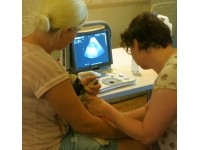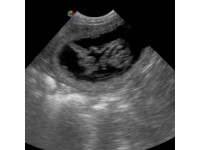Vet Image Solutions, passionate about ultrasound.
Blog by Vet Image Solutions
CALCULATING CANINE GESTATIONAL AGE
One of the most common questions asked of ultrasound technicians performing pregnancy scans – particularly on dogs – is the due date. In breeds where parturition can be difficult, it is important to know when the bitch is due so that the owner can be present, or arrangements for a Caesarean section be made in advance.
EQUINE PREGNANCY – HOW CAN IMMUNOLOGY HELP?
The field of reproductive immunology has rapidly advanced in recent years, yet continues to raise a plethora of unanswered questions. Drawing from research on several species, a number of mechanisms have been attributed to aiding in the understanding of the ‘million dollar question’ – namely, how can a foetus avoid maternal immune rejection and survive throughout the gestation period, despite being genetically different from the mother?
CANINE ULTRASOUND SCANNING COURSES – WHY YOU SHOULD ATTEND
Why not treat yourself to a Christmas present that will benefit you for a lifetime, and attend one of our canine scanning courses? You can find out more information on these courses, including when they are held and the different levels of ultrasound scanning that we hold by clicking here.
THE PITFALLS OF WORKING WITHIN THE FIELD OF VETERINARY ULTRASOUND – FACTORS PRACTITIONERS SHOULD CONSIDER
For those specialised within the veterinary field, the limitations of working with animal species are all too clear. Human research has adopted the role of the ‘benchmark’ by which veterinary research is compared, despite the importance of the latter in its own right. Nevertheless, ultrasound imaging has been carried out on a number of animal species, including those that could be considered more ‘unconventional’: ranging from snakes, to hyenas and even elephants.
CANINE AND FELINE PREGNANCY – HOW ULTRASOUND CAN HELP
As with any pregnancy, an expectant mother of the veterinary world should ideally minimise the number and type of stressors they may be exposed to in order to increase the chance of their offspring having calm and relaxed natures.
CAN YOU HEAR ME?
The potential applications for ultrasound are endless, and can be used across a range of species as has been discussed in previous articles. However, what exactly is ultrasound? It is easy to forget that, as is alluded to in the title, ultrasound is indeed a sound pressure wave, although it is at frequencies so high it is undetectable to the human ear. Humans have an upper frequency limit of 20 kilohertz (kHz), whereas ultrasound can reach frequencies of greater than 200 megahertz (MHz). Consequently, ultrasound can be considered a ‘standard’ sound, albeit not audible to humans. Interestingly however, humans can possess ultrasonic hearing if ultrasound is targeted to the cochlea via bone, bypassing the confines of the middle ear.











